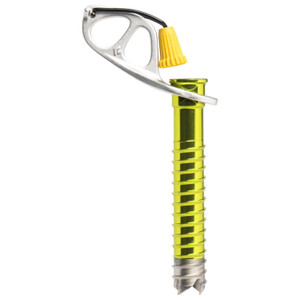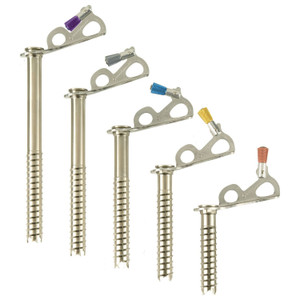
Ice climbing screws (often called ice screws) are tubular, threaded metal anchors used in ice climbing and alpine climbing to protect the climber in case of a fall. They are screwed directly into solid ice, creating a temporary anchor point that a rope can be clipped into for protection.
What Do Ice Screws Do?
-
Act like “ice bolts” — they anchor you to the ice while leading or setting up belays.
-
Provide protection on vertical or steep ice routes.
-
Used for crevasse rescue systems, rappels, and belay anchors in alpine environments.
Parts of an Ice Screw:
| Part | Purpose |
|---|---|
| Tube (body) | Hollow shaft with threads that screw into ice |
| Teeth | Sharp cutting edges at the tip that bite into the ice |
| Hanger | Attachment point for carabiners or quickdraws |
| Crank/Handle | Fold-out lever or knob for fast and easy placement |
Ice Screw Sizes:
-
Lengths typically range from 10 cm to 22 cm
-
Shorter screws are faster to place but less secure
-
Longer screws offer more holding power, especially in soft ice
Common strategy: Carry a variety of lengths for different ice conditions and placements
When and How to Use Ice Screws:
| Use Case | Details |
|---|---|
| Lead protection | Place screws as you climb up vertical or steep ice to catch a fall |
| Belay anchors | Use 2–3 screws in solid ice for a secure anchor |
| V-thread (Abalakov anchor) | Two overlapping holes drilled with screws to create a rappel anchor |
| Crevasse rescue | Used as anchor points in glacier rescue scenarios |
Tips for Using Ice Screws:
-
Place them in solid, clear ice — avoid aerated, cracked, or sugary ice
-
Keep the teeth sharp for easy and safe placement
-
Use quickdraws or slings to connect the rope to the screw
-
Practice placing screws quickly, especially with gloves in cold conditions
Would you like a quick guide on how to build an ice anchor or use screws in a crevasse rescue system?


